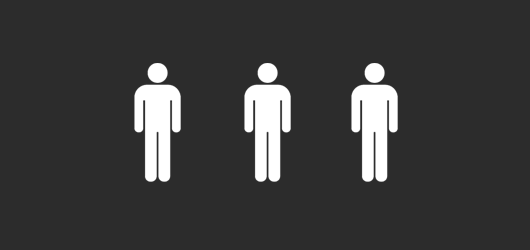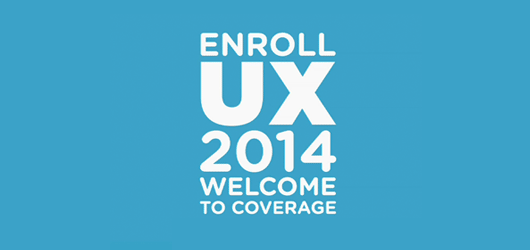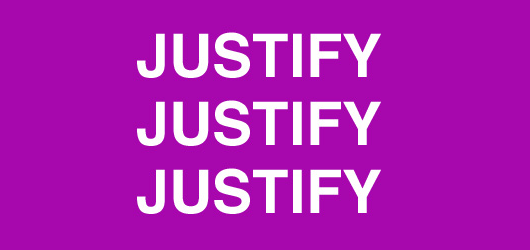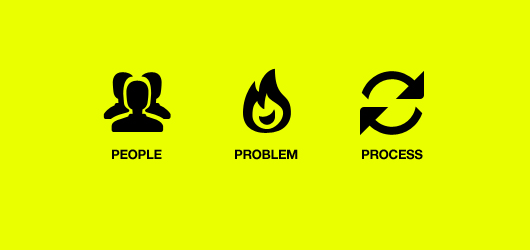When I was in school, in the comments section of every report card, the teacher always wrote that I needed to talk more and contribute to class discussions. I never really understood those comments because it made me think that I needed to change something about my self.
UX Magazine: Owning Your Story
I wanted to share a recent article I wrote that’s been published on UX Magazine’s website, it’s called Owning Your Story. Storytelling has been on my mind a lot recently. But not in the way that everyone’s talking about. It’s not about the basics of how to tell a story. Continue reading
Going Solo To Do The Work I Love
Last week I quit my job. I wasn’t going to write one of these blog posts. But the thing is, I love to write, and above all, I love stories and the power they have to inspire, entertain, and educate. The process of writing – the forced creation and evaluation of your story Continue reading
Why You Should Start With A Minimum Viable Team
This week I was thinking a lot about what makes a great startup team. So many of the “lists” that come out try to identify what “not” to do in a startup and the 10 reasons why startups fail. A lot of times, these lists focus on the product – explaining that the startup failed because the product was too complicated, or too simple, or just didn’t make sense. However, I think another key reason that we need to address is the element and influence of the initial team, the first key hires that you make as a startup.
Rather than give my thoughts, I’d like to point to you to a really awesome post that Charlie O’Donnell wrote on the subject. His blog post Minimum Viable Team is a complete breakdown of every conceivable role you think you would need, and then he slowly eliminates each role that you don’t really need to get to a Minimum Viable Product. This method of slowly showing you what you can Continue reading
How The Popularization Of User Experience Is Diluting The Details
“The details are not the details, they make the design.” – Charles Eames
Most people think that design is just about deliverables. But, every great designer knows that it’s really about the process of discovery, problem, and solve that we go through to ultimately reach the design. What design is really about, is the million little details and the thoughtful decisions that we make along the way. Unfortunately, with the democratization of design, comes a focus on deliverables, and a sacrifice of the details.
Today, everyone thinks they’re a designer. This can be attributed to the ever growing popularity of the fields of user experience and design (in fact, the field is in such demand, that Inc Magazine listed it as one of the 5 hardest jobs to fill in 2012.) Needless to say, in a very short amount of time, the field has gone from being relatively unknown to now a buzzword – something that everyone feels they’re qualified to govern. As a result, the very details that “make the design” are at risk.
The popularization of the field of user experience is causing a growing focus on the deliverable and not enough attention on the details. Why? Continue reading
EnrollUX 2013: Designing A Better Health Insurance Enrollment
It’s that time of year that I loathe – open enrollment for health insurance. Each year no matter how much research I do, or how many questions I ask, I feel like I have no idea what I’m selecting and that inevitably, something is being done wrong.
Having grown up in Canada, the notion of applying for health insurance, selecting from a myriad of plans, and trying to guess how much money I should set aside for health care expenses is just something I never had to deal with. And although I’ve been living in the USA for about 12 years, I still feel like I have no idea what I’m doing.
This all got me thinking, I wonder how many people either abandon pursuing insurance, or have the wrong insurance due to the complexity and friction of the entire process. Continue reading
TED Tuesday: Graham Hill “Less Stuff, More Happiness”
I have to admit, lately I’ve found myself on a de-cluttering kick. I’ve been trying to figure out what triggered this new hobby – and my subsequent new weekend ritual of taking bags of stuff to HousingWorks in Tribeca.
When I think about it, it really boils down to wanting a simpler life. With less stuff, comes more time, more freedom, and more space. It’s about having more opportunity to surround yourself with the things and people that matter, creating less physical and mental distractions, and exercising restraint against the ever present addiction we have to consumption as a society. I think that our homes and how we live are a projection of how we approach the rest of our lives. If we don’t recycle and are wasteful at home, it’s likely that we are wasteful with other resources, such as at the office or in relationships. Continue reading
Kill The Content, Tell Your Stories
Content is a popular topic right now. Brands are heavily focused on how to create, distribute, and measure their content – with the belief that content will lead to customers.
It’s true, the distribution channels that brands have access to put them closer to the consumer than ever before. And, the time that people spend online is higher than it’s ever been – and with smartphones, people are always just a tap or swipe away from these channels. In short, the opportunity appears to be huge to connect consumers with branded content. But, is this really the case?
Mitch Joel of Twist Image wrote a great article called The Drug Of Content that focuses on the misconception we have about the need for content and the value that it can have. Joel outlines a few key problems. First, it asks a lot of consumers. Messages pass by consumers as fast as cars on a freeway. How can you be sure that your consumers (or future consumers) will even notice? Second, the speed at which content can be distributed risks that we focus on the quantity of content we can produce and therefore, the quality suffers. So what’s a brand to do? Continue reading
The Democratization Of Design & The Lost Art Of Justification
A sad thing happened to my recently. I was shown a website that was recently redesigned and it was horrible. Not just a few pixels off, but entirely incoherent. There was no consistency or re-use of elements, the fonts were all over the place, navigation jumped around, breadcrumbs came and went, and it was simply something that looked like an elementary student could have made. But that wasn’t the most painful part. The most painful part was a scary realization that the democratization of design is breeding a whole group of people who can make stuff, but can’t tell you the why behind what they are doing. Is the pre-fab model of design is forfeiting the important art of justification and meaning?
When I started out, we did not have websites that sold Photoshop templates. We did not have websites that held contests for people to design a logo for $39. We did not have massive libraries of site templates and stencils to work from. More importantly we didn’t just focus on making, we also focused on meaning. Continue reading
3 Tips For Companies Looking To Hire A User Experience Designer
User experience design continues to be one of the hardest jobs to fill. Companies are realizing the value that creating a great user experience can have on their business. Today, people more than ever expect, and demand, a great experience. This is an exciting time for the industry. However, as companies race to create great user experiences, I’m concerned that the quality of the experiences could be jeopardized.
I’d guess that the rise in demand for user experience designers is being fueled significantly by companies who finally realize the value of focusing on creating a great user experience. But, as companies seek to improve their user experiences, they face a huge challenge in actually finding candidates. Of course, supply and demand is a key contributor to this problem.
However, the greater problem is that most companies don’t truly understand the exact skill set within user experience design that their company specifically needs. Companies are walking blind into the hiring process – and that’s scary, for everyone involved.
So how can we help solve this problem?
How can companies truly understand the role of user experience in their organization? And from this knowledge, how can companies be sure they are hiring the correct person for their team? Continue reading









